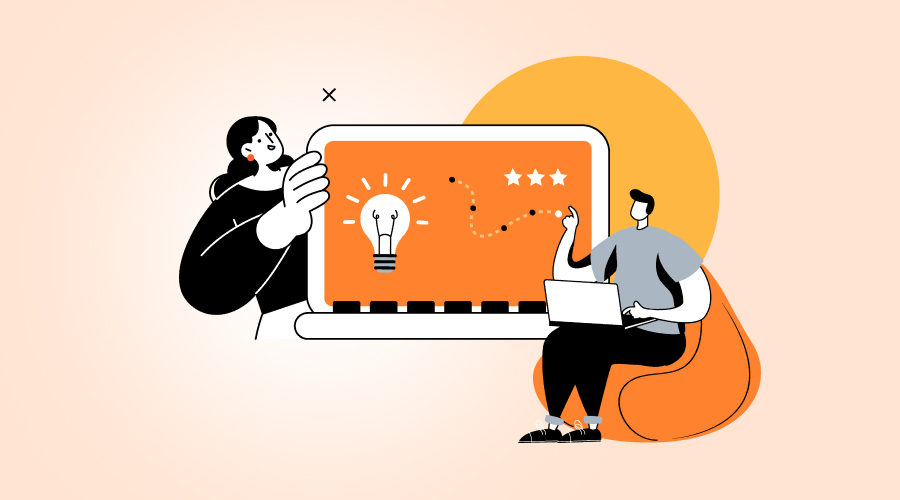Since the dawn of search engines like Google and Yahoo in the 1990s, there has been a persistent clash between creativity and SEO within the realm of web design. The pursuit of the perfect balance between these influential factors is imperative for businesses, regardless of their size or scope. However, what truly characterizes good design, and how can you achieve it?
Understanding the Playing Field: Creativity vs. SEO
SEO specialists, web designers, digital marketers, and business owners may have different opinions on the best approach. However, Knovial, as a creative agency with a strong SEO focus, can help break down silos and share insights on achieving balance.
Getting Found
SEO optimization aims to improve a webpage’s ranking in search results, ultimately leading to securing a spot on the esteemed first page of Search Engine Results Pages (SERPs) and increasing the likelihood of user clicks. In the realm of SEO, Google dominates the majority of market share.
The Power of Design
SEO is useful to bring people to your website, but good design makes them stay and come back again. A well-designed site helps build brand loyalty and encourages repeat visits. Studies show how important design can be: about 50% of consumers think that a nice-looking and easy-to-use website is very important for the success of a brand.
In our agency, finding balance is very important. Both SEO and design are crucial for the success of a website. Ranking high on Google naturally is great, but if the design does not engage visitors and turn them into customers, it’s an empty success.
Site Speed
The loading speed of a website is crucial for both SEO and user engagement. Google evaluates website quality through crawling, and slow loading times can lead to penalties.
Certain creative elements can negatively impact speed, including:
- Large, high-resolution videos: These visually stunning videos can significantly slow down a website.
- Uncompressed images:Raw images with transparent backgrounds, especially PNGs, take longer to load.
- Javascript micro-animations:While visually captivating, they can slow down overall web page performance.
- Flash files: Flash is outdated and slows down websites.
- Cut-out images: Transparent background cut-outs, though visually appealing, can impact speed.
The Challenge of Balancing Visual Appeal and Speed
In a world full of online content vying for attention, designers may employ these methods to ensure their work gets noticed. Nonetheless, it comes with the cost of slowing down the website and impacting SEO efforts.
Finding the Sweet Spot: Tailoring Creativity to Your Brand
Creating a harmonious balance between design and speed is the key to achieving success. This can be achieved by tailoring it to your specific brand.
For example, a bank or law firm may prioritize pristine formatting with minimal imagery. Users visiting such websites prefer text-intensive content with minimal visual aids. As long as these components are effectively designed, ensuring swift loading speeds should not pose a problem.
In contrast, if you are the ambassador of a lifestyle brand, festival page, or creative agency, as we are, prioritizing the display of creativity becomes paramount. Incorporating animated backgrounds, high-quality imagery, and intricate layers of text elements might be indispensable in showcasing your proficiency, despite their potential to decrease site speed.
To optimize your website’s performance, it is crucial to infuse creativity while adhering to reasonable speed protocols. Your site may not be the epitome of swiftness, yet it must boast sufficient rapidity to support the desired design components.
The Importance of Site Structure and Content Hierarchy
A website’s meticulous organization and clear content hierarchy facilitate effortless navigation for both users and search engines. This results in a heightened user experience and enhanced SEO performance.
Your website’s structure serves as a crucial roadmap, dictating the organization of pages, product nomenclature, and content layout. A disorderly map filled with perplexing labels, concealed data, and exorbitantly lengthy pages can disorient and vex visitors.
Here are some quick tips to improve your website’s structure and content:
- Keep the navigation bar fixed to the screen so that users can easily access different sections while scrolling.
- Use clear and concise H1 and H2 headings that users would naturally search for.
- Keep paragraphs short and focused, aiming for 3–4 sentences per paragraph. Limit each page to a maximum of 6 paragraphs.
- Ensure important content, such as service descriptions, is easily accessible and not hidden within accordions or dropdowns.
- Avoid complex drop-down menus with too many options. Opt for a simple and user-friendly menu design.
A well-structured site and a concise content hierarchy are pivotal in optimizing your website for search engines and enhancing the user experience. Consider these tips to construct a more easily navigable and SEO-friendly online platform.
Conclusion
To make a website successful, it’s very important to balance creativity and SEO. You can improve user experience and visibility on search engines by making sure the site loads fast, choosing creative elements carefully, and keeping good structure with easy navigation. A website that is both visually appealing and functional will keep visitors interested in coming back for more. In a collaborative manner, designers, content creators, and SEO experts can find a balance that satisfies both aesthetic appearance and technical needs. Use the tips discussed in this blog to confirm your website reaches its full capacity for drawing in viewers while getting a better position in search results.







